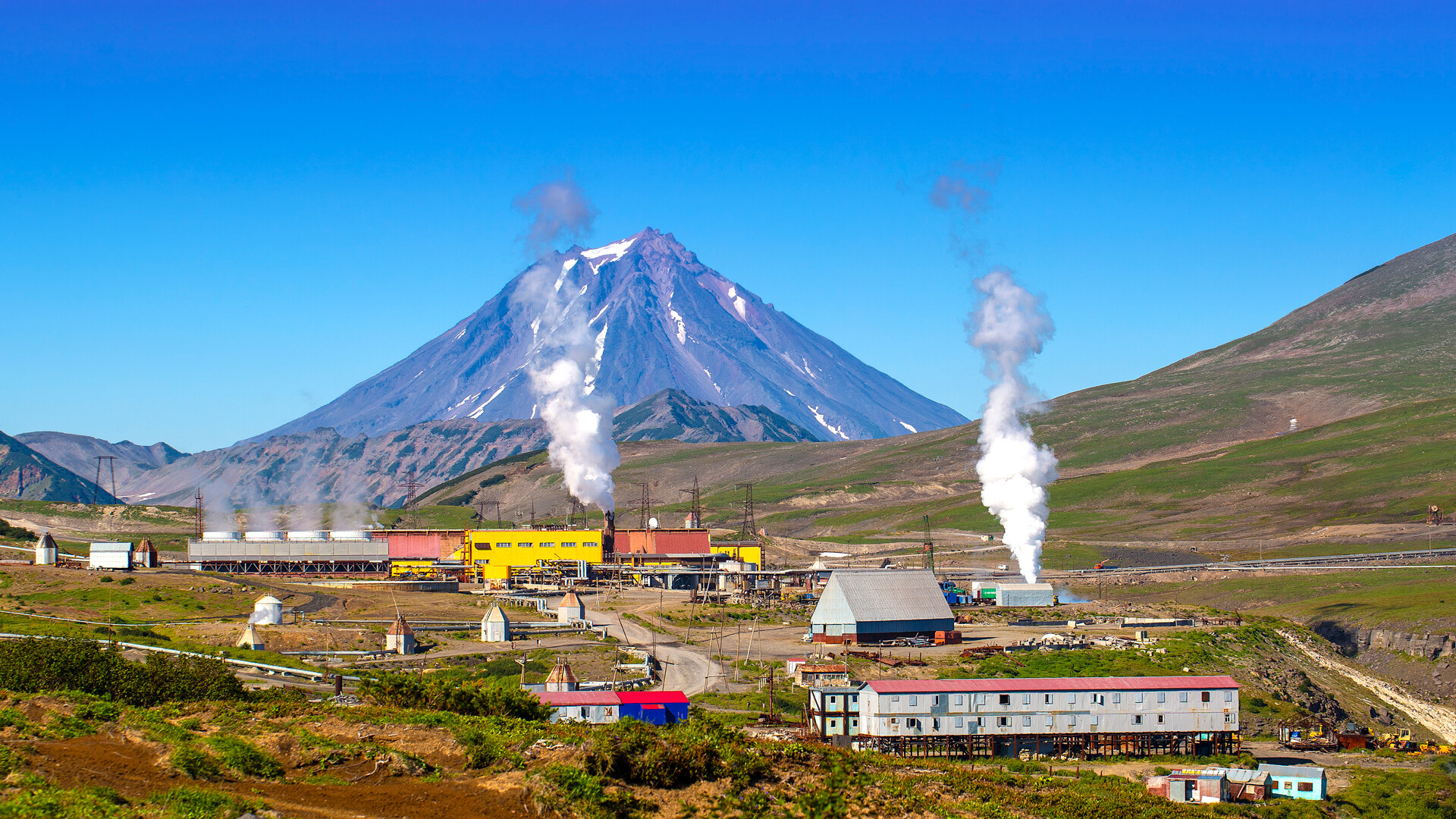
Mutnovskaya geothermal power station in Kamchatka.
Legion MediaElectrification of the country was one of the Bolsheviks' universal goals after the 1917 Revolution. Scientists "tamed" water and wind in search of new sources of energy, without which the industrial development of the state would have been impossible. And, in the Far East, they found another, alternative source of energy.
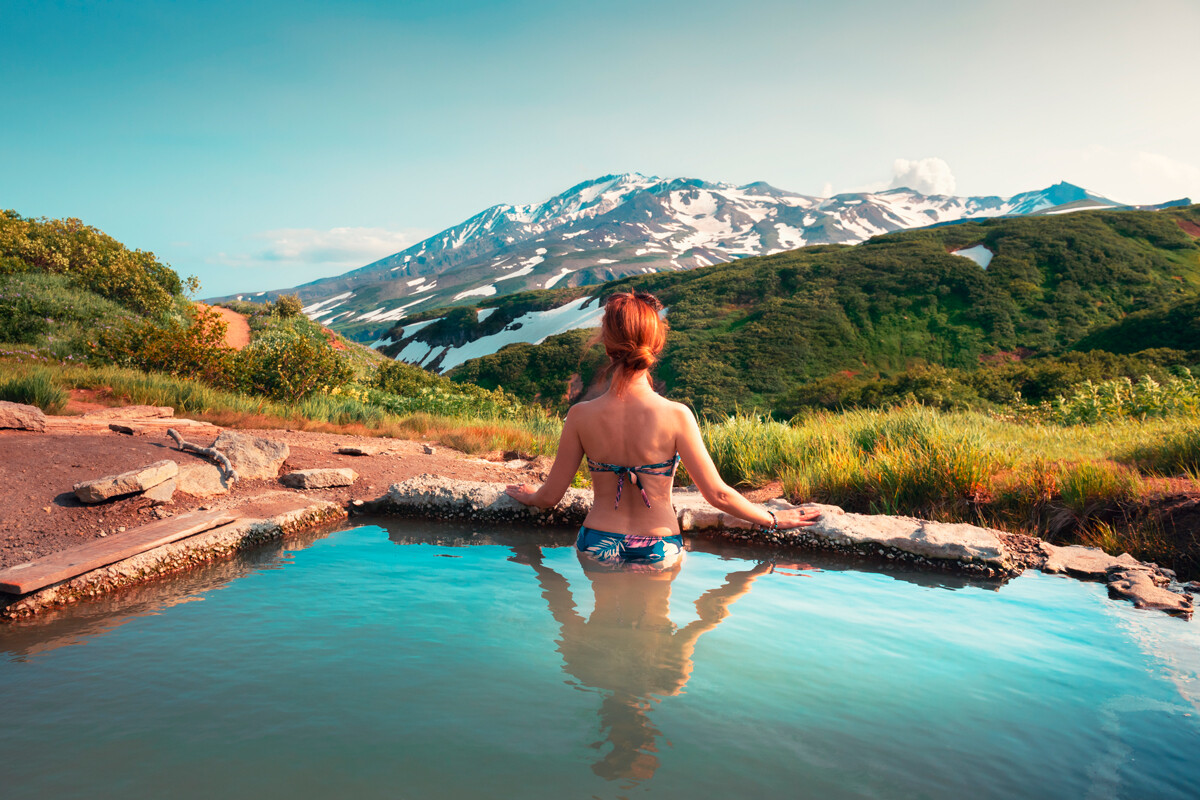
Kamchatka is the land of hot springs.
Legion MediaThe Kamchatka peninsula (Kamchatka Territory) and the Kuril Islands (Sakhalin Region), situated a long way from mainland Russia, have a high concentration of active volcanoes, geysers and thermal waters. These sources were used for heating houses in the past, but it was only in the 20th century that it proved possible to convert steam into electricity for industrial needs.
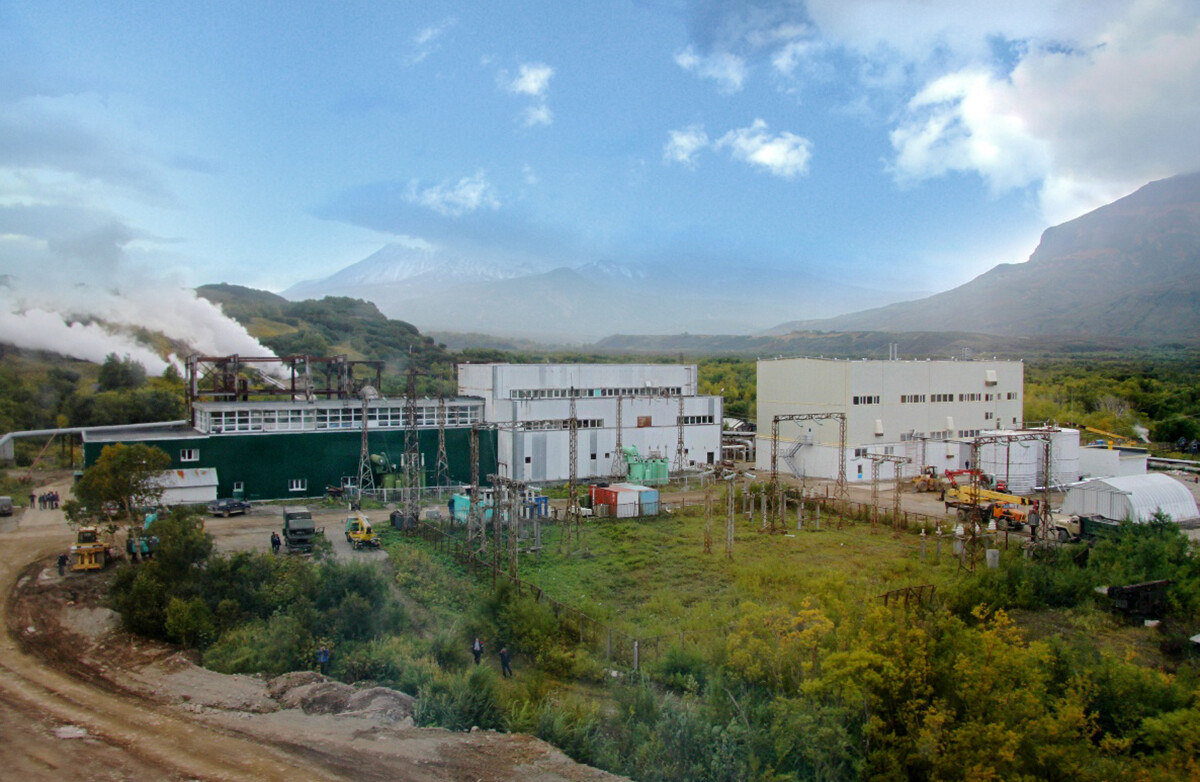
Pauzhetskaya plant.
RusHydroThe first geothermal power station in the world was built in Tuscany in Italy in 1904 and it now supplies electricity to an area around the village of Larderello. As for Soviet scientists, they began their research in Kamchatka after the Great Patriotic War (World War II).
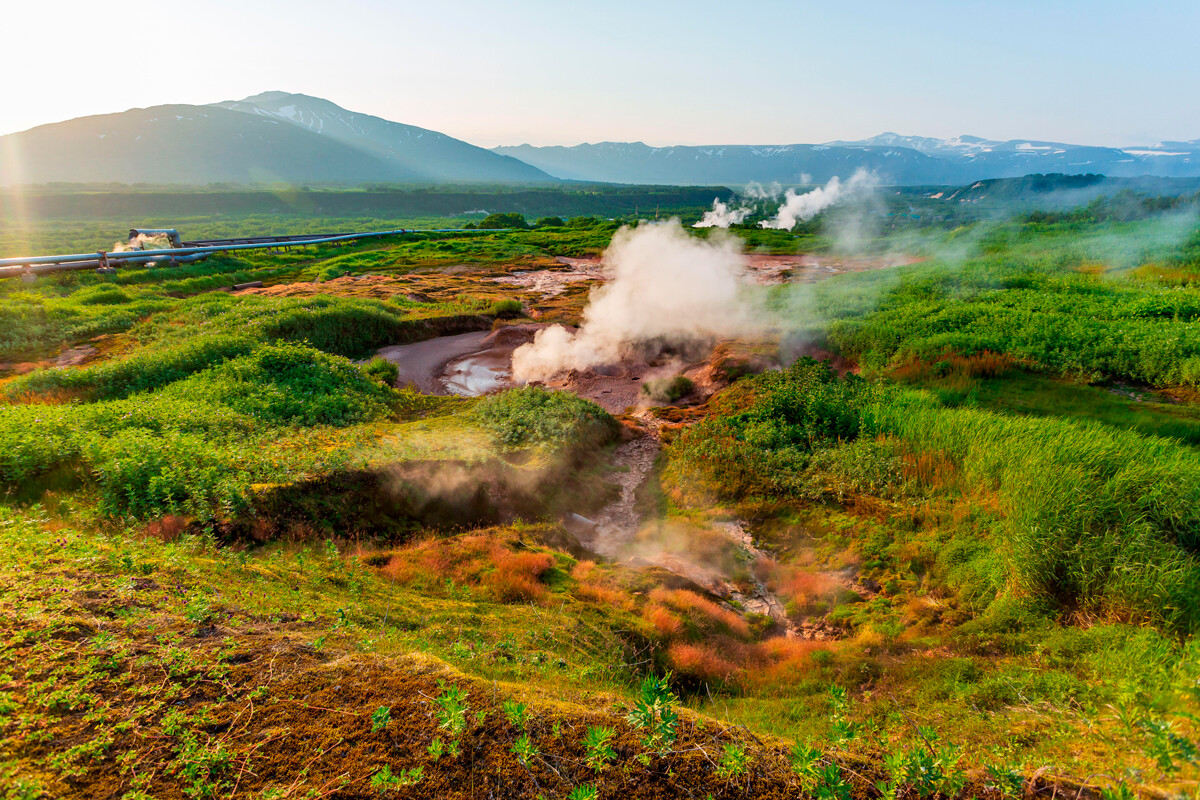
Around Pauzhetskaya plant.
Legion MediaA site for the construction of the first geothermal power station was chosen in the southernmost part of the peninsula in the settlement of Pauzhetka near the Ozernovskiye hot springs. In 1966, a pilot plant was put into operation and it still serves the entire Ozernovsky urban-type settlement (population about 2,000) and local fishing-industry plants. Its rated capacity today is 12 MW. In addition to electricity and heating, the station provides hot water to the settlement for growing vegetables in greenhouses (this is of great help to horticulture given that, even in summer, the temperatures here do not rise above about 10°C/50°F).
In 1967, near the settlements of Paratunka and Termalny 70 km from Kamchatka’s capital, Petropavlovsk-Kamchatsky, the Soviet Union put into operation the first binary geothermal power station in the world. The station is a closed-cycle system in which geothermal water is used to vaporize fluids with a low boiling point (specifically, this plant usually uses freon, which boils at 51.9°C/125.42°F). The steam thus obtained drives the turbines, which means that hot springs that do not have a very high temperature can still be used for geothermal power plants.
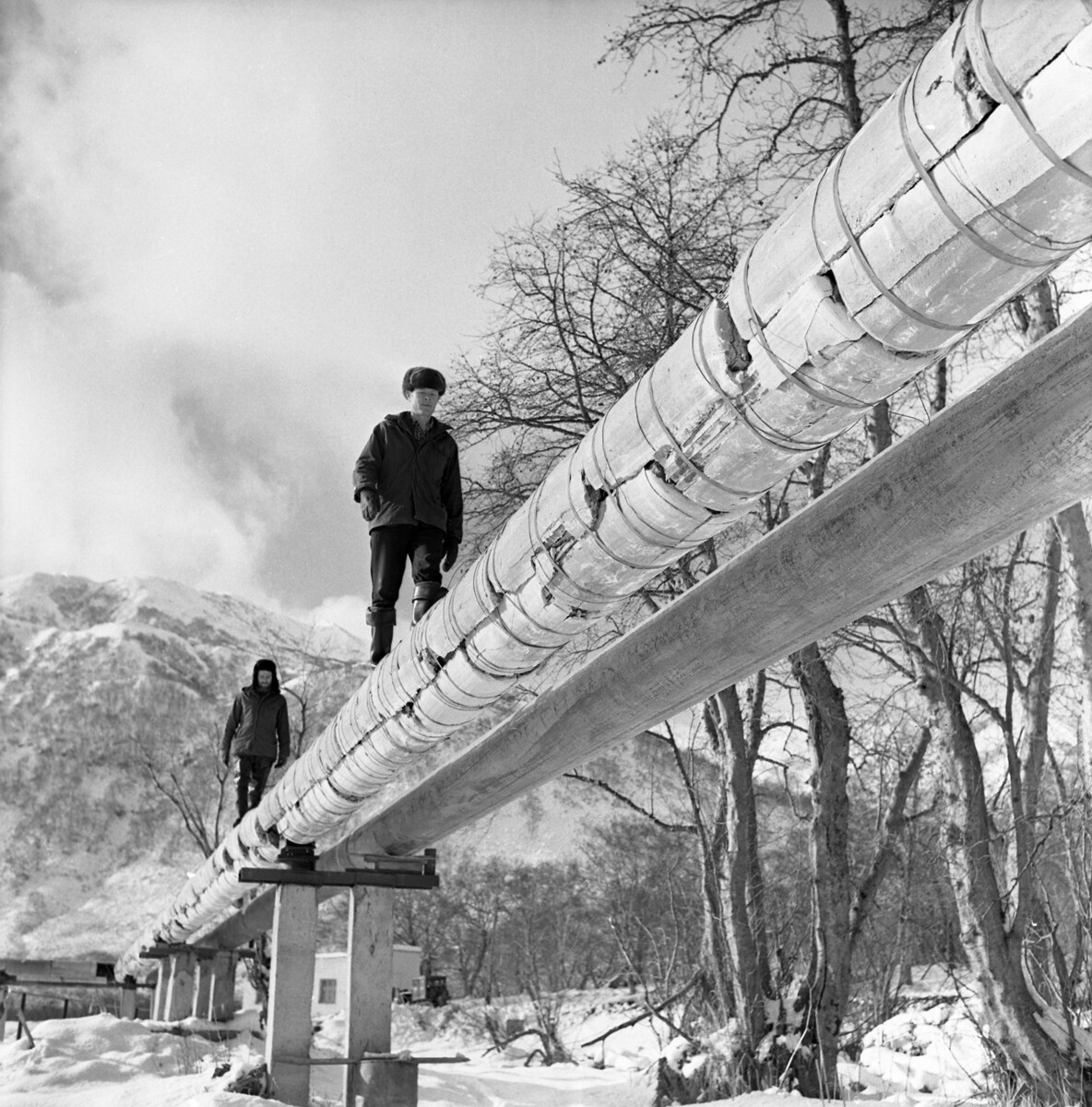
The geothermal power station near Paratunka, 1968.
Lev Garkavy/SputnikThe future lies with just these kinds of power plants, according to today’s scientists, given that very hot springs are fairly infrequent on the planet, while water at moderate temperatures is encountered everywhere.
The Soviet Union could have continued to develop the energy of geysers, but, in the 1970s, because of the political crisis in the Middle East, oil prices soared fourfold and the further development of geothermal energy started to look unnecessary. Major reserves of hydrocarbons were prospected in the USSR, ensuring rapid economic growth for European countries and a reliable source of revenue for the USSR (more details here)
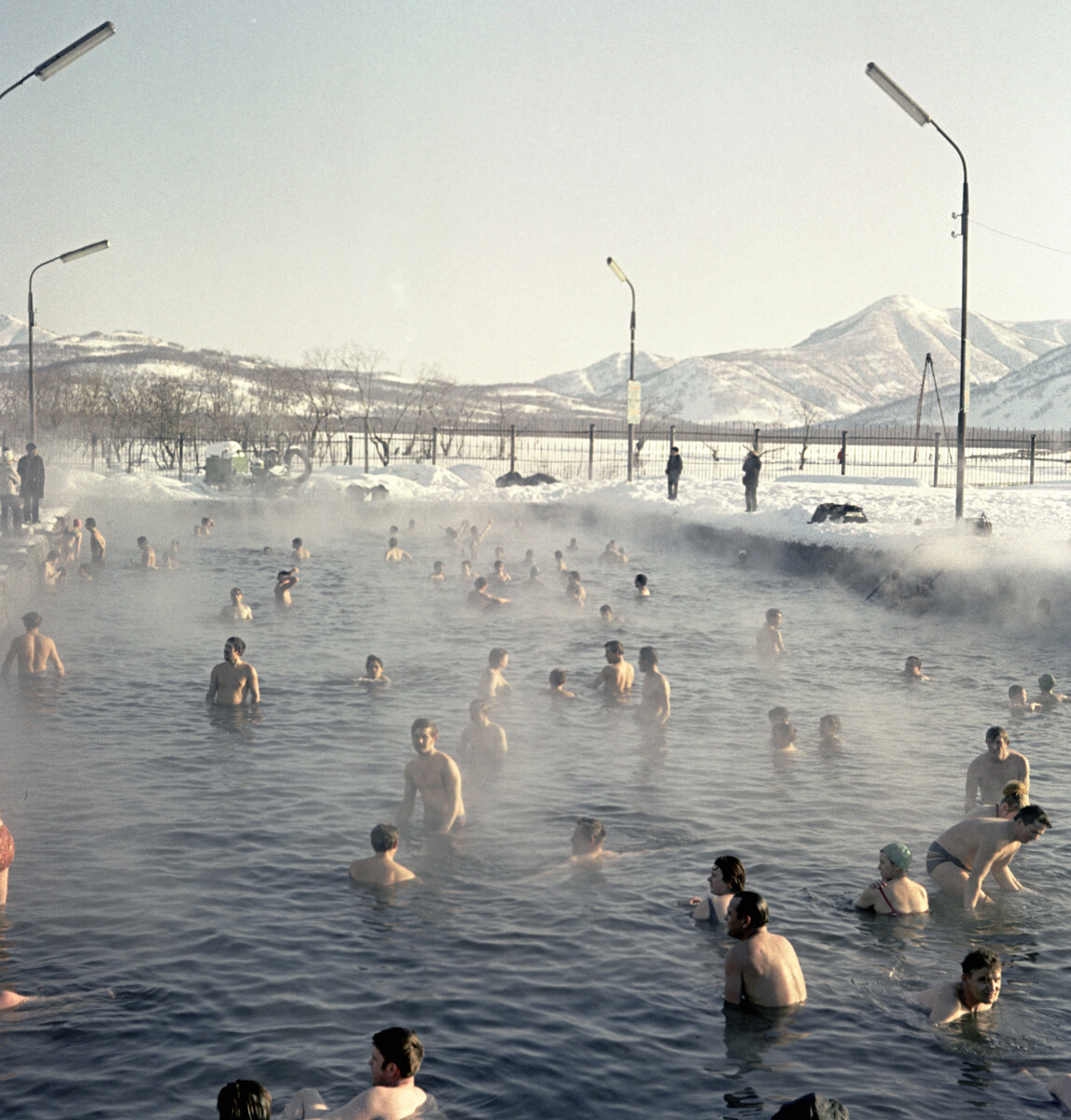
A pool on the Paratunka River near the active volcanoes of Kamchatka. The air temperature is -37°C, and the water temperature is +37°C, 1974.
Lev Garkavy/SputnikThe USSR only remembered about alternative sources of energy in the late 1980s, after the promulgation of a CPSU Central Committee resolution on the development of the Soviet Far East. But, a few years later, the USSR fell apart and a decade passed before the topic of geothermal energy was revisited.
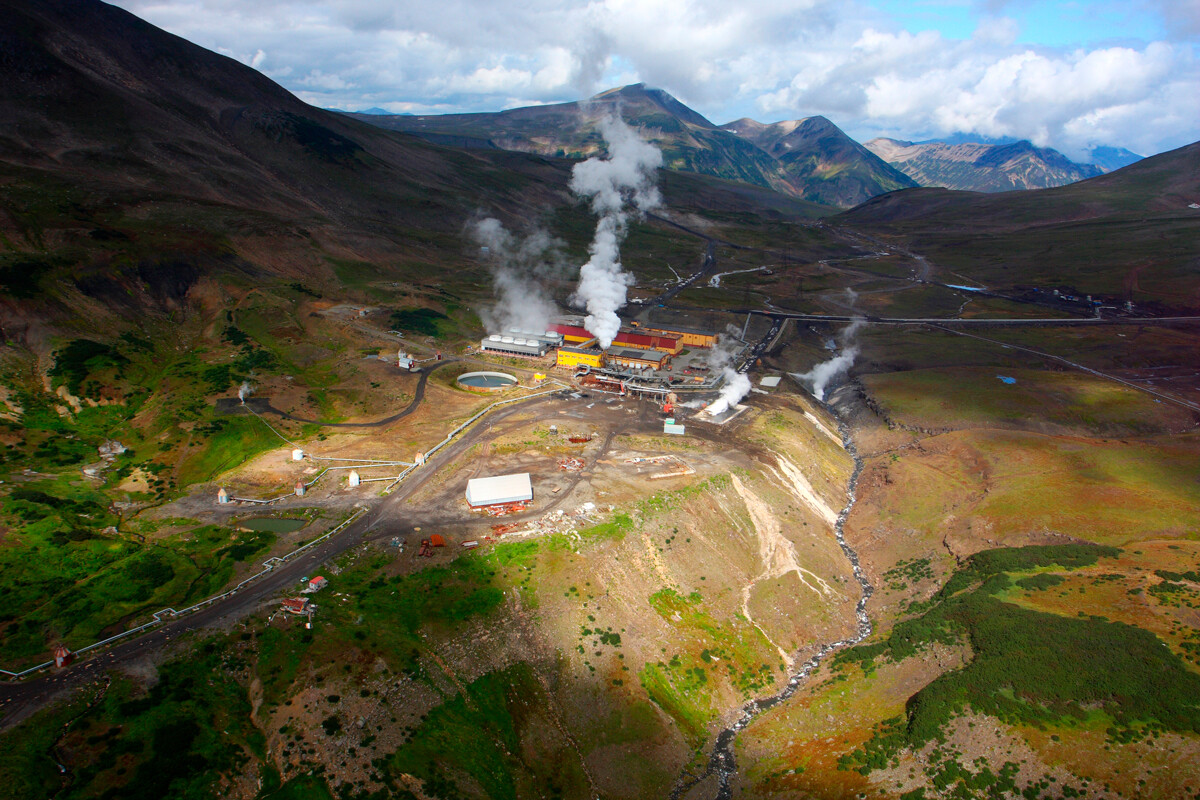
Mutnovskaya plant.
Legion MediaThere are currently four operational geothermal power stations in Russia, three of them in Kamchatka and one in the Kuril Islands. In addition to the Pauzhetskaya power station, the new Verkhne-Mutnovskaya and Mutnovskaya plants in the south of the peninsula, at the foot of the Mutnovsky Volcano, in Yelizovsky District (population over 50,000), were commissioned at the end of the 1990s as a replacement for the Paratunskaya plant.
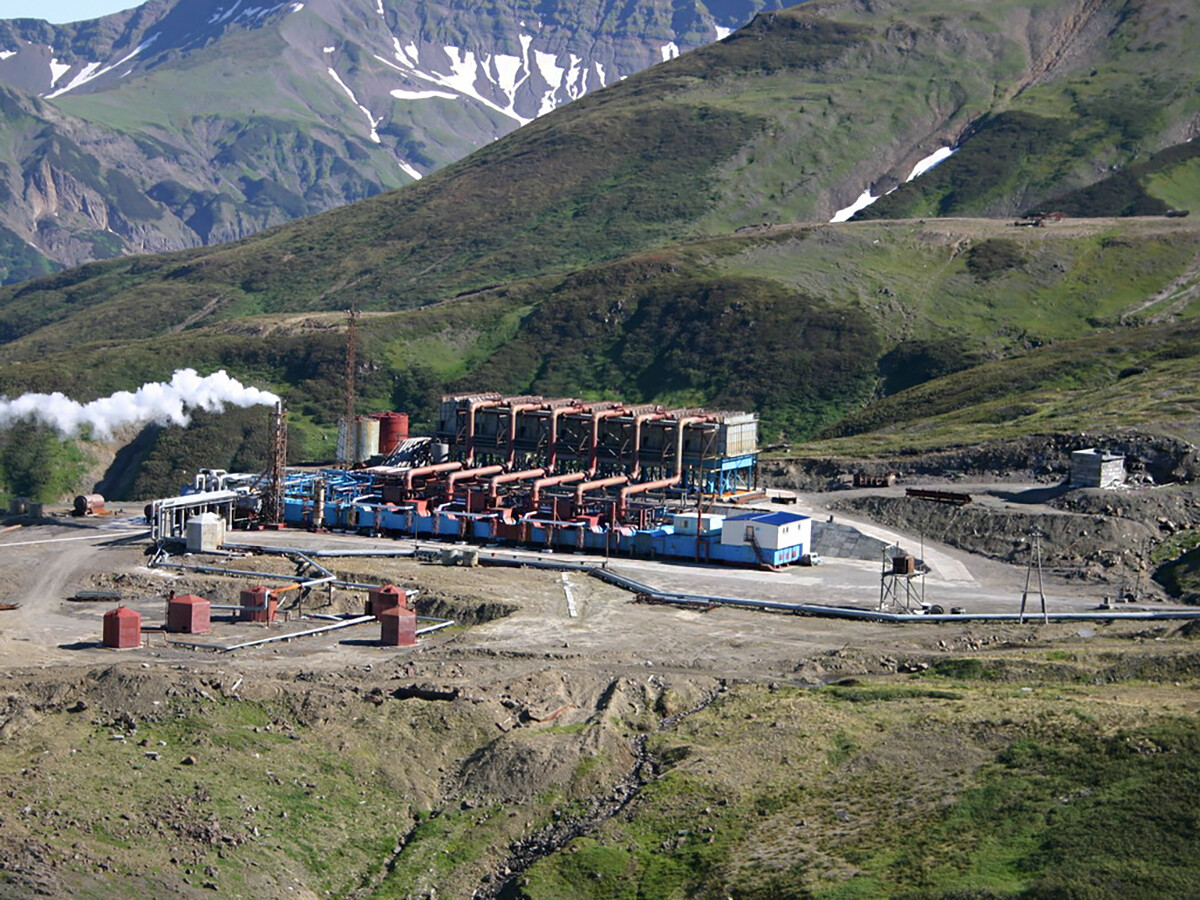
Verkhne-Mutnovskaya plant.
RusHydroThey work in tandem with local heat-and-power and hydro-electric power stations, feeding their electricity into the unified Kamchatka grid. Construction of these geothermal power plants took account of the seismic conditions - they can withstand an earthquake of up to magnitude 9.
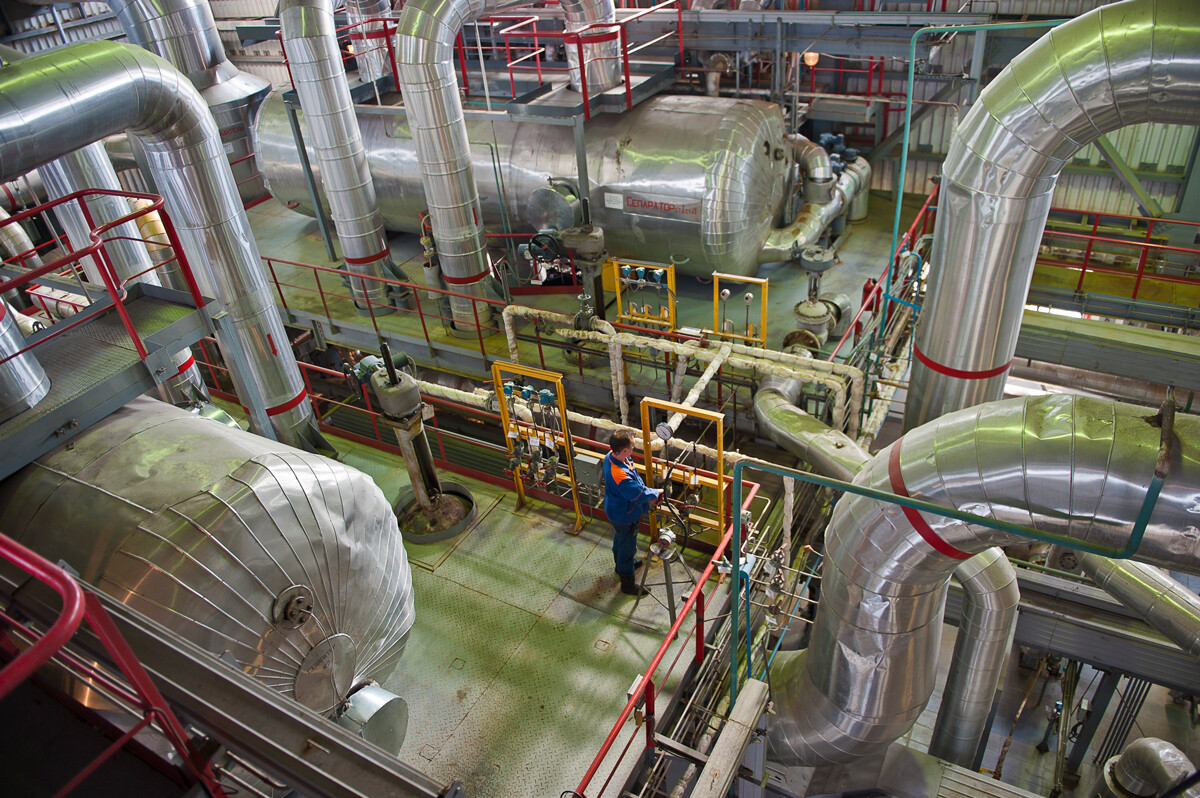
Inside the Mutnovskaya plant.
Anatoly Strunin/TASSThe Mendeleyevskya geothermal power plant on the island of Kunashir (the southernmost of the Kuril Islands) was commissioned in 2002. It has a capacity of just 7.4 MW, but, with its help, electricity and heating are supplied to homes and fishing enterprises in the settlement of Yuzhno-Kurilsk, where 7,000 people live.
There are also settlements in these parts that are fully and exclusively heated by thermal waters - Esso, Termalny and Paratunka. These are popular spa resorts today.

Yuzhno-Kurilsk.
Legion MediaThermal waters are a renewable and practically inexhaustible resource, while the power plants themselves do not require a high level of water consumption and do not pollute the atmosphere. At the same time, they have a significant drawback: Their power conversion efficiency is not high at around 10 percent (compared with about 40 per cent for a standard heat-and-power plant and more than 90 percent for a hydro-electric power station). And, although they account for less than one percent of Russia’s total power generation, in Kamchatka, they have become irreplaceable, as other sources of energy there are difficult to come by and more expensive. Generation of electric power at geothermal plants is 2-3 times cheaper here than at local heat-and-power plants, because the latter operate on fuel brought from outside.
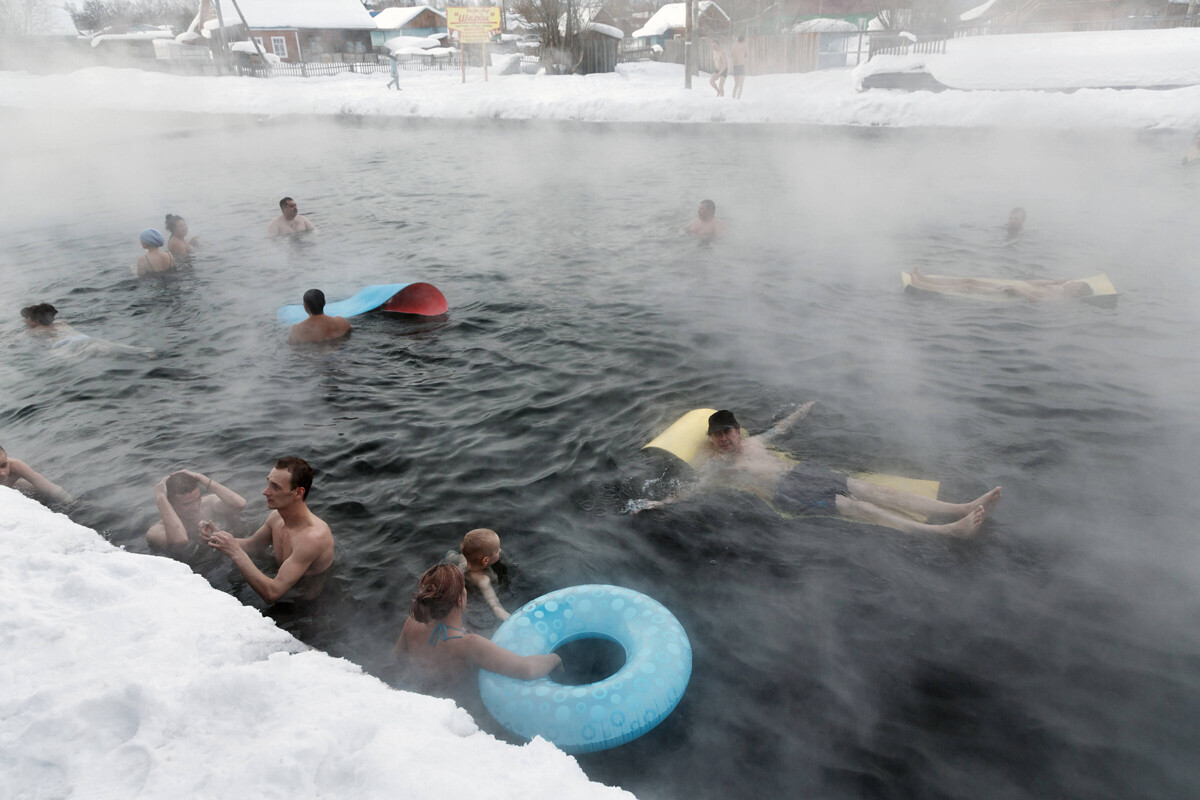
Here are the springs in Esso.
Legion MediaThe North Caucasus is today regarded as another region with positive prospects for geothermal energy. Some settlements here already get their heating from hot springs and the construction of geothermal power plants is being discussed.
Dear readers,
Our website and social media accounts are under threat of being restricted or banned, due to the current circumstances. So, to keep up with our latest content, simply do the following:
If using any of Russia Beyond's content, partly or in full, always provide an active hyperlink to the original material.
Subscribe
to our newsletter!
Get the week's best stories straight to your inbox